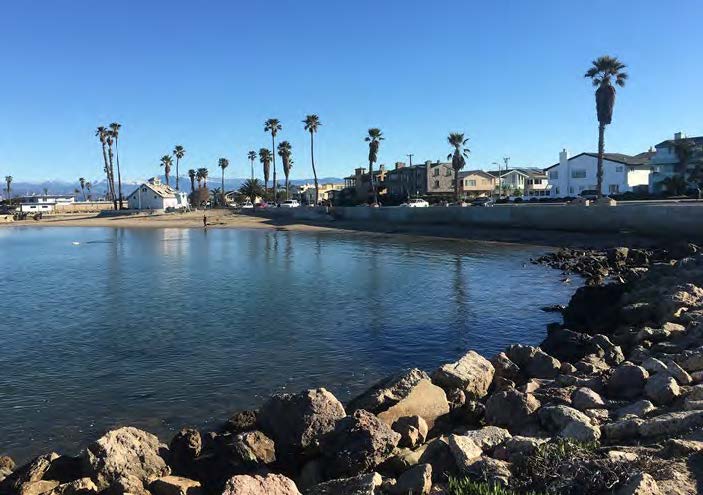Non-targeted analysis to be tested in Ventura County source tracking study

SCCWRP has launched a study with Ventura County exploring how the unique chemical patterns inside storm drains might be used to identify and track sources of human fecal contamination in waterways, an approach that has the potential to complement existing, DNA-based source tracking methods.
The study, launched in December, will use non-targeted chemical analysis to analyze coastal storm drain infrastructure for potential human fecal contamination during wet weather.
Non-targeted chemical analysis is a novel approach for tracking sewage in waterways; it focuses on analyzing patterns in the overall chemical makeup of a water sample to create an overall chemical fingerprint – instead of focusing on identifying specific, individual chemicals through traditional targeted chemical analysis.
Last year, SCCWRP and its partners showed in a proof-of-concept study in San Diego that non-targeted chemical analysis can be used to distinguish sewer pipes from storm drain pipes – as well as one sewer pipe from another – during dry weather.
The Ventura County study, which spans just a few blocks of a beachfront residential neighborhood in Oxnard, is the first phase of a broader effort to pinpoint the source(s) of elevated human fecal contamination levels at Hobie Beach and Kiddie Beach Park in Channel Islands Harbor during wet weather; the side-by-side beaches have a TDML (total maximum daily load) for bacteria in wet weather.
During wet-weather events this winter, researchers will look for chemical indicators of sewage contamination in a storm drain that runs through the residential neighborhood. The storm drain is the largest of a handful that discharge into Channel Islands Harbor near the two beaches.
The non-targeted chemical analysis method will be tested alongside two more traditional source tracking approaches: targeted chemical analysis, which focuses on identifying specific chemicals associated with sewage, and microbial source tracking, which relies on a genetic marker known as HF183 to track human fecal contamination.
Having an additional, chemistry-based line of evidence would increase management confidence in the results of DNA-based microbial source tracking. Especially if water-quality managers are considering replacing or repairing sewer infrastructure, they need assurances that this potentially costly investment will achieve intended reductions in beach fecal contamination.
During the study, researchers will explore whether non-targeted analysis can be used to pinpoint potential sources of sewage entering storm drain pipes – perhaps down to a specific neighborhood block. Researchers also hope non-targeted analysis will be able to shed light on whether the sewage is coming from a sewer leak vs. illegal dumping vs. contaminated groundwater.
Results of the study could inform how researchers move forward with investigating other potential sources of human fecal contamination in Channel Islands Harbor and beyond.
For more information, contact Dr. Bowen Du.
More news related to: Emerging Contaminants, Microbial Source Tracking, Microbial Water Quality, Top News